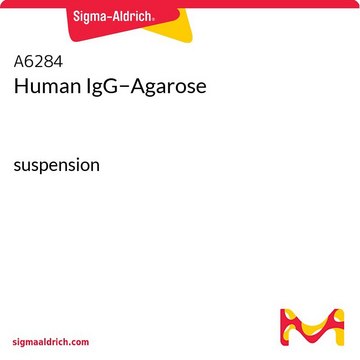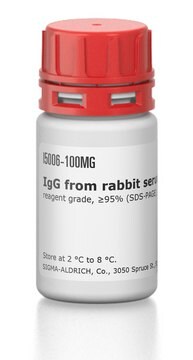A8914
Anti-Rabbit IgG (whole molecule)−Agarose antibody produced in goat
affinity isolated antibody, saline suspension
About This Item
Prodotti consigliati
Origine biologica
goat
Coniugato
agarose conjugate
Forma dell’anticorpo
affinity isolated antibody
Tipo di anticorpo
secondary antibodies
Clone
polyclonal
Stato
saline suspension
Grado di funzionalizzazione
~1 mg per mL
tecniche
immunoelectrophoresis: suitable
Matrice
Cross-linked 4% beaded agarose
Attivazione matrice
cyanogen bromide
Braccio spaziatore
1 atom
Capacità
≥0.25 mg/mL, resin binding capacity (rabbit IgG)
Temperatura di conservazione
2-8°C
modifica post-traduzionali bersaglio
unmodified
Cerchi prodotti simili? Visita Guida al confronto tra prodotti
Descrizione generale
Immunogeno
Applicazioni
Stato fisico
Esclusione di responsabilità
Non trovi il prodotto giusto?
Prova il nostro Motore di ricerca dei prodotti.
Codice della classe di stoccaggio
12 - Non Combustible Liquids
Classe di pericolosità dell'acqua (WGK)
WGK 1
Punto d’infiammabilità (°F)
Not applicable
Punto d’infiammabilità (°C)
Not applicable
Scegli una delle versioni più recenti:
Possiedi già questo prodotto?
I documenti relativi ai prodotti acquistati recentemente sono disponibili nell’Archivio dei documenti.
Il team dei nostri ricercatori vanta grande esperienza in tutte le aree della ricerca quali Life Science, scienza dei materiali, sintesi chimica, cromatografia, discipline analitiche, ecc..
Contatta l'Assistenza Tecnica.






